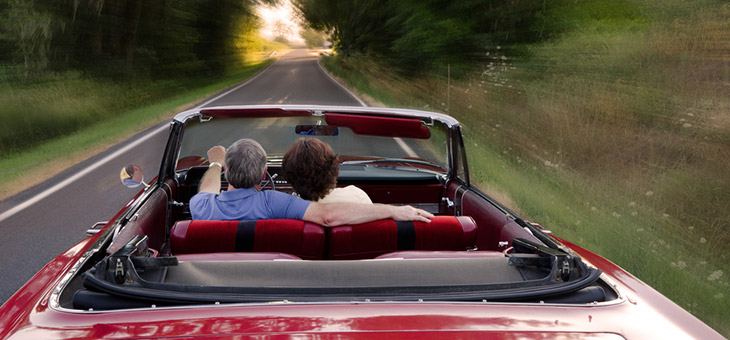Apart from being a great way to see a foreign land, driving overseas will often save you money on flights and – if you hire an RV or campervan – accommodation.
But many people fear driving on the right-hand side of the road. And it’s not just the road side that changes: the steering wheel is on the opposite side of the car, as are many of the instruments. However, with a few simple tips and some minor readjustments, driving on the ‘wrong’ side of the road can be simpler than you think.
Here are some suggestions for adjusting to driving on the wrong side of the road.
When you first get in the car
First of all, you’ll notice that the steering wheel is on the left-hand side. This means you’ll have to operate the gearshift and other essential apparatus with your right hand. A good way to get over this is to permanently rest your hand on the gear stick, so your hand gets used to the location of the shifter.
Also, by resting your left elbow on the armrest or window ‘sill’, you’ll quickly assume the posture needed to drive a left-hand-drive car.
Aligning the left-hand side of your car to the lines on the left of the road will give you bearings and help you get used to being in a strange position on the road.
The good news is that, although the steering wheel and gearstick swap sides, the pedals all remain the same. And indicators and windscreen wiper levers vary anyway, depending on the country of origin of the make and model car that you’re driving, so it shouldn’t be a problem.
Try to remember that you are driving on the right-hand side of the road at all times by repeating the mantra ‘I need to drive on the right-hand side of the road’. It may sound obvious and a little crazy, but it will help you get used to your new situation.
On the road
Familiarise yourself with the different road system. Remember that, when turning left, you’ll be crossing lanes of traffic. Left-hand turns are the most dangerous for foreign drivers.
When in a roundabout, think the opposite of home. You need to give way to the left and drive around anti-clockwise.
And always look to the left first when emerging from a side road. But look to the right in France and Belgium, as local laws give priority to vehicles in side roads to the right of a main road.
If you’re on a narrow road, pull over to the right to allow oncoming cars to pass you. And remember that overtaking lanes and dual carriage lanes are the opposite of home, meaning that the overtaking lane is on the far left and the slow lane is on the far right. Stick to the lane on the far right until you build confidence.
And most importantly …
Make sure you have car-hire coverage included in your travel insurance or take out the extra coverage when you hire the car.
Handy hints
If you can pick up your hire car from somewhere outside of the city, it will allow you to become familiar with foreign roads before you dive into stressful city driving situations.
And spend some time getting used to all the dials, switches, levers and pedals in your hire car before you hit the road. That will allow for fewer things to worry about in an already unfamiliar situation.
Know the road rules
Road rules vary from state to state, country to country and, sometimes, region to region. So familiarise yourself with the local laws. There are some standards, such as:
- being required to have your headlights on at all times when driving in Europe
- it is illegal to turn right at a red light in many European countries, unless signs specify otherwise
- you have to carry a reflective jacket and other safety equipment at all times in many European countries
- you are required to carry a breathalyser at all times when driving in France.
Read more at www.icarhireinsurance.com
Have you ever driven in a foreign country? Can you share some tips with our members?
Related articles:
International driving permits
Avoiding car hire problems
Should you hire a car overseas?

